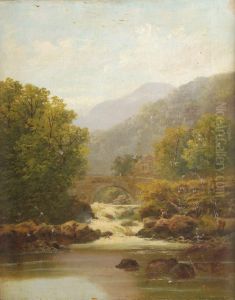Francis Muschamp Paintings
Francis James Muschamp was a British genre painter who lived during the late 19th and early 20th centuries. Born in 1863, he came of age during a period when British art was experiencing a transition from Victorian academic styles to the influences of Impressionism and Post-Impressionism.
Muschamp received his artistic training at the Royal Academy Schools in London, an institution that was central to the education of many British artists of the time. His work was characterized by its focus on genre scenes, often depicting moments of everyday life with a sentimental or romanticized flavor—a style that was popular among the Victorian middle class. His subjects frequently included women and children, set in lush, idyllic environments that emphasized beauty and tranquility.
Muschamp's paintings often featured soft, diffused lighting and a delicate use of color, which contributed to the overall gentle and dreamy quality of his scenes. Although he was not at the forefront of artistic innovation, his work was representative of the tastes of a segment of society during his lifetime. He exhibited regularly at the Royal Academy and other venues, and his work was well-received by the public.
Despite the popularity he enjoyed during his lifetime, Francis Muschamp's work did not have the lasting impact of some of his contemporaries, and as a result, he is not as widely recognized today. This could be attributed to the shift in public taste and the critical view that emerged in the 20th century, which favored more progressive artistic movements. Muschamp died in 1929, leaving behind a body of work that provides a window into the aesthetics and social values of his time.








